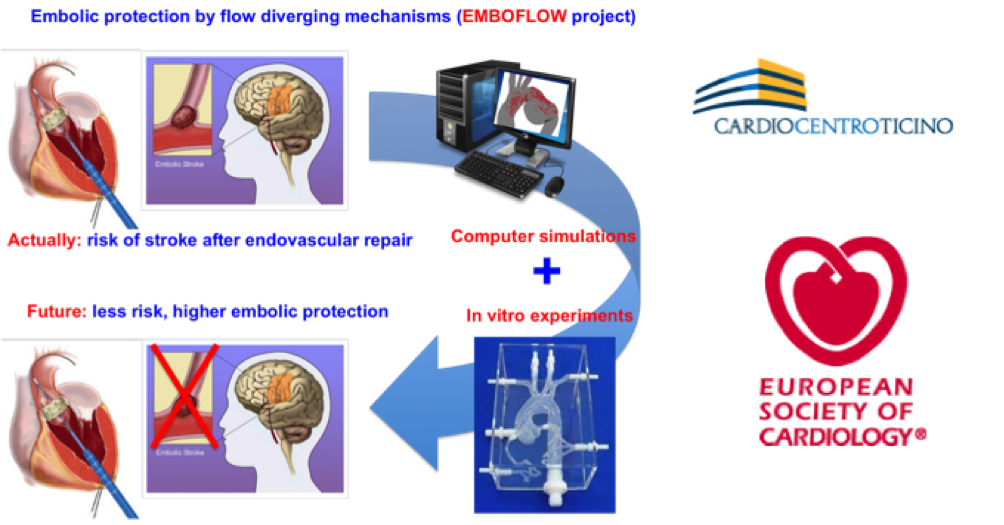Endovascular procedures such as TAVI (Transcatheter Aortic Valve Repair) have revolutioned cardiologic treatments. Unfortunately, stroke is a major complication of such procedures because some of the clots, released during the procedure, migrate to the brain [1]. Several devices were introduced aiming at capturing or deflecting embolic material released during the procedure but a definitive solution is still missing.
Moved by such considerations, EMBOFLOW project aims at modeling the distribution of emboli caused by dislodged calcifications during endovascular procedures like TAVI, and subsequently test a novel hypothesis to avoid cerebral embolism.
This multidisciplinary research activity is supported by a grant of European Society of Cardiology (ESC) awarded to Dr. Michele Conti, PhD in bioengineering, who will integrate the engineering skills and simulation tools developed by the CompMech Group of the University of Pavia, lead by Prof. Ferdinando Auricchio, with the clinical expertise of Fondazione Cardiocentro Ticino under the supervision of Prof. Stefano Demertzis.
The project foresees also the development of a mock loop to test by in-vitro experimentation.
- Simulation of particle release
- In-vitro experiments

REFERENCES
[1] Kahlert, P., Knipp, S. C., Schlamann, M., Thielmann, M., Al-Rashid, F., Weber, M., … & Sack, S. (2010). Silent and apparent cerebral ischemia after percutaneous transfemoral aortic valve implantation. Circulation, 121(7), 870-878.

